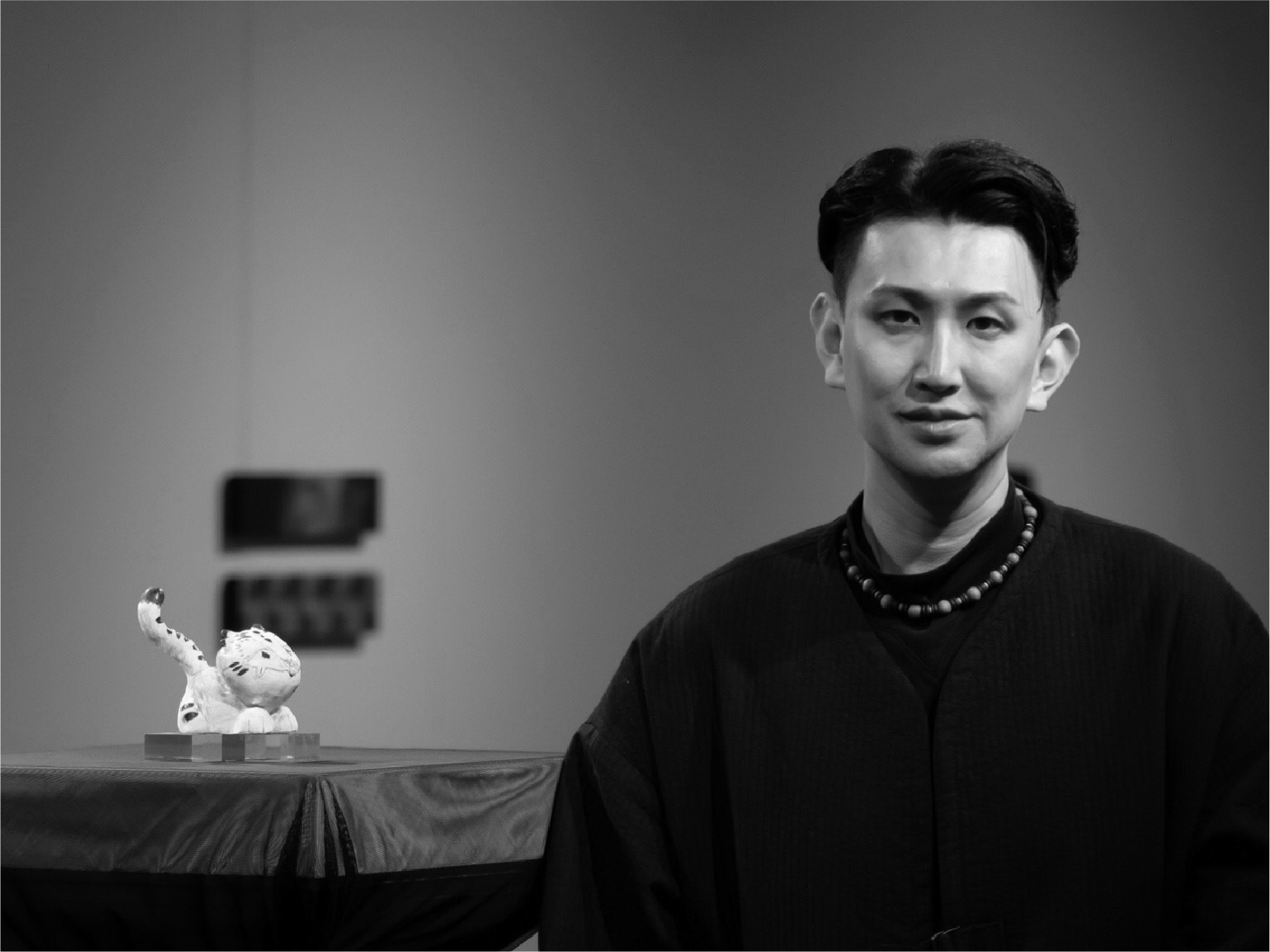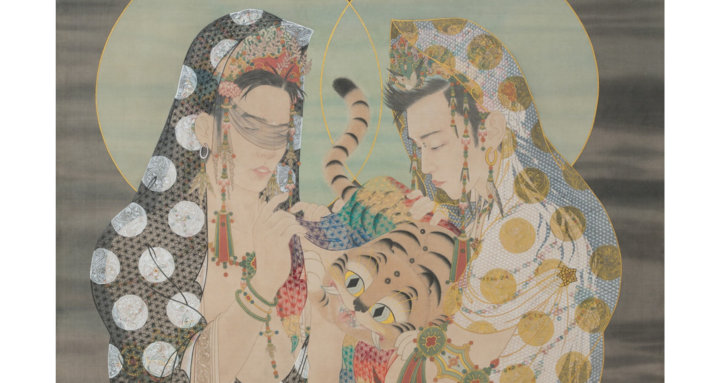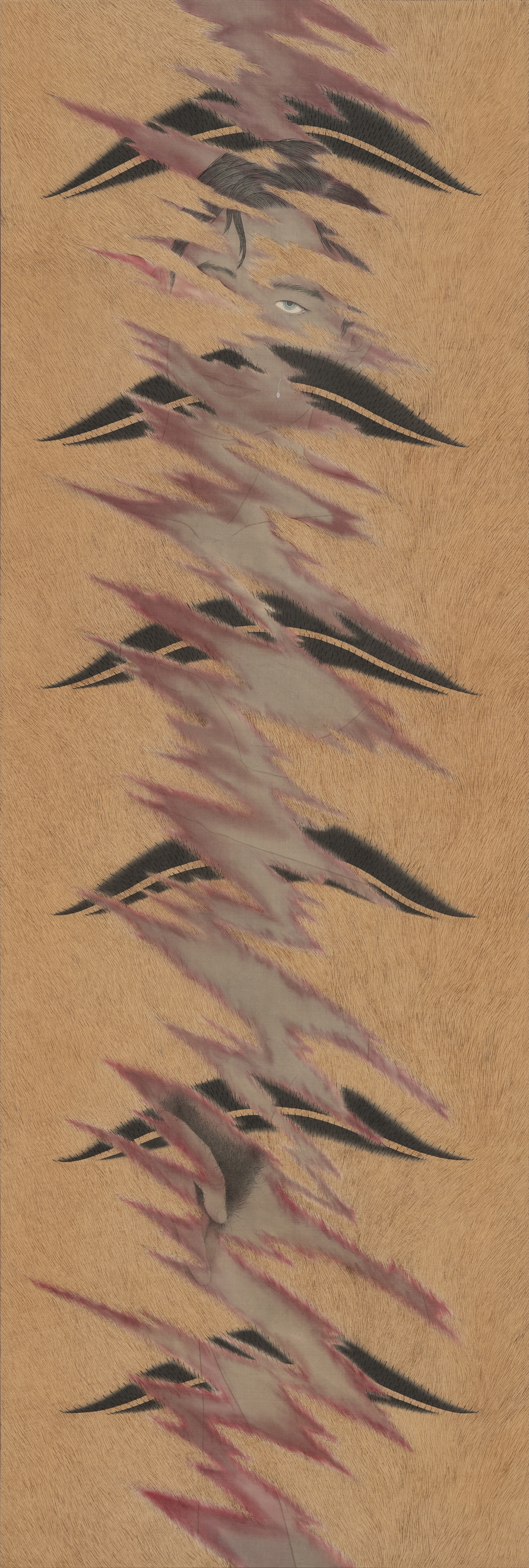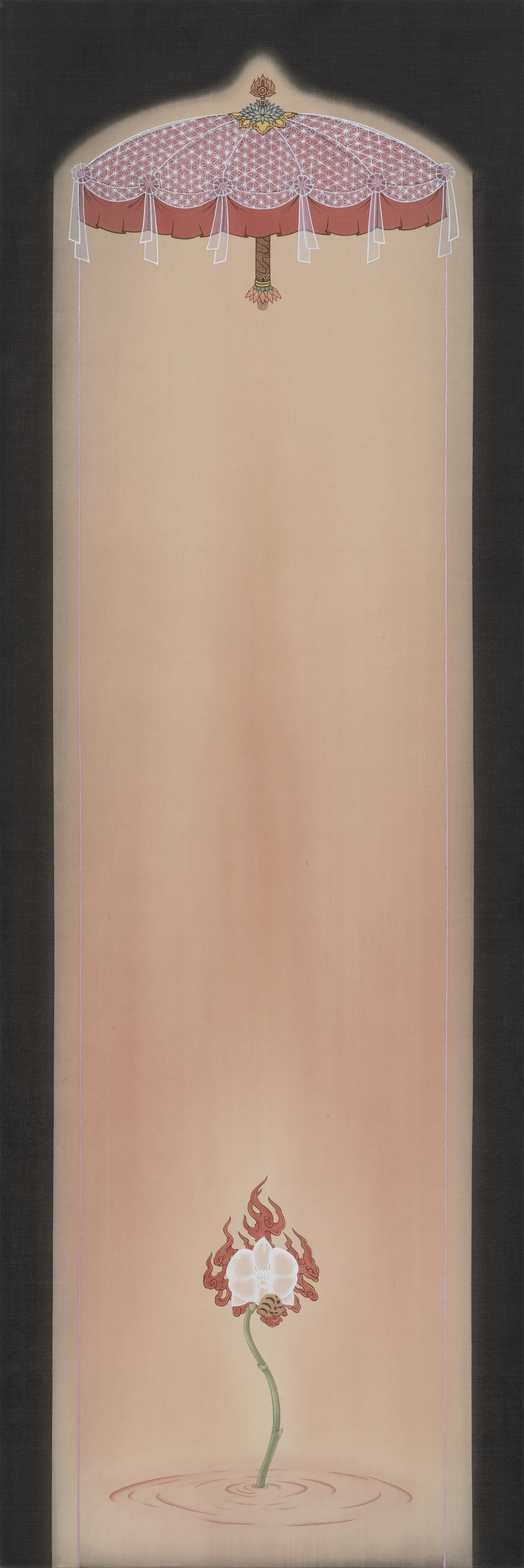박그림
띠오

박그림
박그림은 한국 전통 불화(佛畫)의 형식에 자신의 이야기를 겹쳐 그린다. 성스러운 종교화의 양식 안에 자신의 퀴어 정체성과 경험을 담아내는 것이다. 작가는 자신의 작업이 “사회를 나누는 여러 이분법적인 시선 속에서, 퀴어라는 존재가 차별 없이 동등하게 받아들여질 수 있을까”라는 질문에서 출발한다고 말한다. 그는 전통을 빌려 현재를 이야기하고, 과거와 현재가 충돌하는 지점에서 소외된 존재들을 위한 새로운 신화를 만들어낸다.
박그림은 동국대학교에서 불교미술을 전공해 학사 학위를 받았다. 2022년에는 제22회 송은미술대상 본선에 진출했으며, OCI미술관과 선프라이드 재단 등 유수의 기관에 작품이 소장되기도 했다. THEO, 스튜디오콘크리트 등에서 개인전을 열고 일민미술관, OCI미술관 등 주요 미술관의 단체전에 참여하며 자신만의 작업 세계를 펼쳐왔다.
그의 작업 세계를 관통하는 핵심은 불교 설화의 ‘재해석’이다. 대표 연작인 ‘심호도(尋虎圖)’는 깨달음을 얻기 위해 소를 찾아 나서는 동자의 이야기인 ‘심우도(尋牛圖)’를 바탕으로 한다. 작가는 여기서 ‘소’를 ‘호랑이’로 바꾸고, 단군신화에서 인간이 되지 못한 채 배제된 호랑이의 존재를 퀴어의 위치와 연결한다. 비단 위에 겹겹이 색을 쌓고 선을 긋는 고된 과정은 그에게 하나의 존재를 기리는 공양 행위이자 수행과도 같다.
작가는 자신의 작업이 “보수적인 불교미술계와 퀴어 커뮤니티라는 두 세계의 경계에 놓여있다”고 말한다. ‘불경하다’는 비판과 ‘너무 전통적이라 현대미술이 아니다’라는 평가를 동시에 받기도 했다. 그럼에도 작업을 지속하는 가장 큰 원동력은, 자신의 그림을 보고 “내 존재가 조금 덜 이상하게 느껴졌다”고 말해주는 누군가의 목소리였다. 이름 없는 존재, 경계에 선 이들을 위한 동시대의 종교화를 그리는 이유다.
이번 Kiaf에서 박그림은 대표작 ‘심호도_간택’을 비롯해 인물이 제거된 화면에 상징적 사물들로 서사를 구성한 ‘사사 四四’ 연작 등을 선보인다. 작가는 “‘간택’이라는 제목을 거꾸로 뒤집어, 스스로를 선택하는 퀴어한 주체의 이야기로 읽고자 했다”고 설명한다. 관객들은 그의 작품 앞에서 ‘깨달음이란 욕망하고 흔들리는 과정 속에서도 일어날 수 있다’는 낯선 감각과 마주하게 된다. 성(聖)과 속(俗)이 뒤섞인 그의 그림은 ‘다름이 함께 존재할 수 있는 세상’은 어떤 모습인지 조용히 묻고 있다.

심호도_간택, Korean traditional painting on silk, 70 × 92 cm, 2018
Artworks

我謎 아미, Korean Traditional Paint on Silk, 120x40cm, 2024

Spring Umbrella, Korean Traditional Paint on Silk, 120x40cm, 2024

